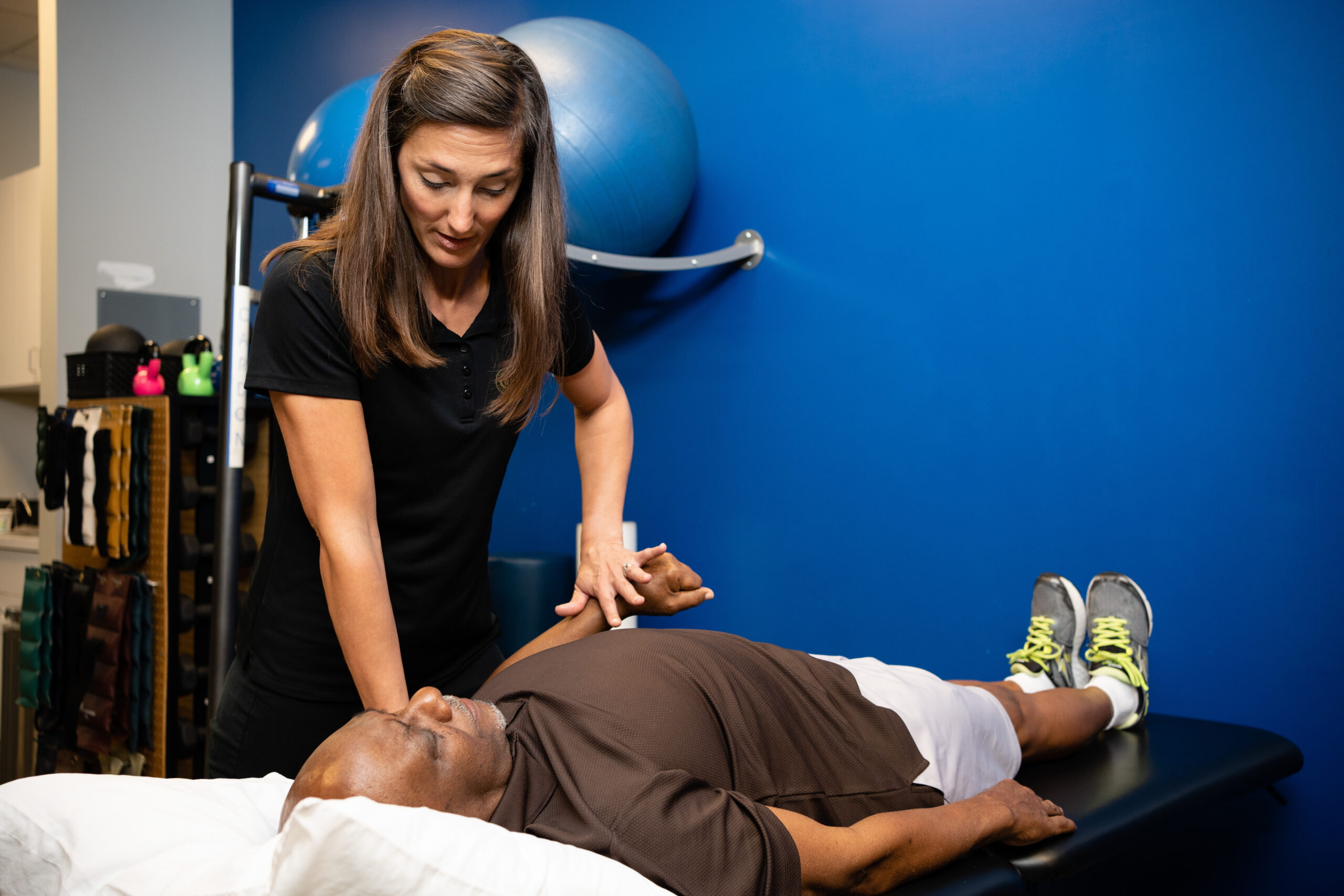What Is an Ankle Sprain?
A sprained ankle happens when the strong bands of tissue (ligaments) that connect bones stretch too far. It’s one of the more common musculoskeletal injuries and causes symptoms that range from mild to severe. While many sprains heal with rest, physical therapy may be necessary to reduce pain, restore movement and prevent future injuries.
What Causes a Sprained Ankle?
An ankle sprain occurs when the joint twists or turns in an awkward manner, placing unusual stress on nearby ligaments.
Common causes include:
- Athletic activities that involve jumping, pivoting or quick changes in direction
- Falling awkwardly or landing on an uneven surface
- Losing balance while walking or running
- Poor footwear that doesn’t support the ankle
- Stepping off a curb or misjudging a stair
- Walking or exercising on unstable or uneven ground
Sprained Ankle Symptoms
An ankle sprain may cause a range of symptoms that make it hard to walk, stand or stay active.
Common symptoms include:
- Bruising around the ankle
- Difficulty putting weight on the injured foot
- Pain, especially when moving the ankle
- Stiffness or limited movement
- Swelling
- Tenderness to the touch
- Unstable feeling when walking
Easy Access, Close to Home
With more than 50 physical therapy locations across Florida, Brooks makes it easy to find care close to home. Many clinics offer extended weekday hours, so you can schedule visits before or after work. And you might not need a referral to start treatment, depending on your insurance. Direct access to our physical therapists can help you feel better sooner. Become a patient.
How Is a Sprained Ankle Treated?
Physical therapists at Brooks treat ankle sprains with a focus on joint movement and control. We use our expertise to deliver treatments that ease pain and get you moving again.
Physical therapy for an ankle sprain may include:
- Electrical muscle stimulation (EMS or e-stim): Gentle pulses reduce ankle swelling and discomfort, especially in the early days after a sprain, when movement is limited.
- Manual therapy: Your therapist moves your ankle joint through controlled motions to ease stiffness and help restore a more natural glide. We use hands-on techniques, like soft tissue release and joint mobilization, to improve comfort and reduce tension around your ankle.
- Mobility, stretching and strengthening exercises: Guided movements help retrain your ankle to move smoothly again, loosen tight calf and ankle muscles, and rebuild ankle control by targeting weak or underused muscles.
Why Choose Brooks for Sprained Ankle Treatment?
Sprained ankles may be common, but the challenges they create vary widely. Our program offers expertise and personalized care for different ages and activity levels.
Highlights of our program include:
- Emphasis on return to sport: Our team includes sports-certified physical therapists who understand the needs of athletes, adolescents and other active people. We tailor therapies to the specific movements of your sport to regain your solid footing while doing what you love. Learn more about sports therapy at Brooks.
- Child-focused care: Pediatric-trained physical therapists understand that growing bodies heal differently when there is an orthopedic injury. We use age-appropriate techniques to support effective ankle sprain treatment while lowering the risk of re-injury. Get more information about pediatric physical therapy.
- Confident everyday movement: Whether your goal is walking the dog, climbing stairs or simply feeling steadier, we tailor sprained ankle treatments to your lifestyle. We regularly care for older adults and people adjusting to changes in their abilities. Therapists focus on balance, strength and control to support your recovery.
FAQs About Orthopedic Physical Therapy for Ankle Sprains
How can PT help a sprained ankle?
Physical therapy helps reduce swelling and pain while restoring strength and pain-free movement. Orthopedic physical therapists look at how your foot, ankle and leg work together. Then, they address any movement patterns that might slow your recovery.
Can physical therapy help prevent future ankle sprains?
You are more likely to sprain the same ankle again if you don’t fully recover from your current injury. We also teach you how to move safely and spot habits that raise the risk of re-injury. Our approach leads to excellent care now and better protection when you’re back in your routine.
How long does it take to recover from an ankle sprain with physical therapy?
Recovery depends on the severity of the sprain. However, a comprehensive physical therapy plan may help you heal more quickly and completely. Some people feel better in a few weeks, while others need a longer treatment plan. Brooks therapists carefully monitor your progress and adjust the therapies as symptoms subside.
Request Care at Brooks
Find out more about becoming a patient and learn about orthopedic physical therapy for a sprained ankle.Latest News and Health Resources
Education and guidance to support your recovery
Brooks Rehabilitation Home Health Receives Top Rankings from Newsweek’s 2026 America’s Best Home Health Agencies List
Brooks Rehabilitation is thrilled to announce that its home health division has been named the best in Jacksonville and ranked among the top 20 in Florida on Newsweek's 2026 America’s...




